“This house got West Sun?”
This article aims to address your concerns such as….
Are you able to completely avoid West Sun?
What is the best facing for a landed house?
Is the direction of the sun the only factor that determine whether the house is hot?
Here are some facts from my research that will benefit you.
Contrary to popular perception, the sun doesn’t
always set in the direct West direction!
As Earth orbits and spins around the sun, the sun direction in Singapore changes throughout the year. The afternoon sun is generally in the west direction.
But from March to September, the afternoon sun is in the north-west direction.
While from September to March, the afternoon sun is in the south-west direction.

So this means…
For East facing unit, you get NO afternoon sun throughout the whole year.
For West facing unit, you get afternoon sun throughout the whole year (including June).
For North facing unit, you get afternoon sun from March to September (including June).
For South facing unit, you get afternoon sun only from September to March.
The Truth is: You cannot avoid the afternoon sun!
… unless all the walls and windows of your landed house face the East only,
...which is not possible!
So What is the Best Facing for Landed House?
From NEA’s website, the hottest month in Singapore is June. The coolest month is December. Hence IDEALLY in June, you will want the Living room and Master bedroom to have no afternoon sun AT ALL! From above, both West-facing and North-facing houses get afternoon sun in June.
So, the direction to avoid is North-West & West facing house. The next hottest facing is South-West.
Terrace Houses
Terrace houses have the living room and kitchen/backyard on the opposite sides of the house.
To minimize afternoon sun, we could choose houses with the font facing
South, South-East, East, North-East.
In such cases, the back of the house will be facing North, North-West, West or South-West.
The figure below shows which direction the morning and afternoon sun will be
coming from in June and in December.
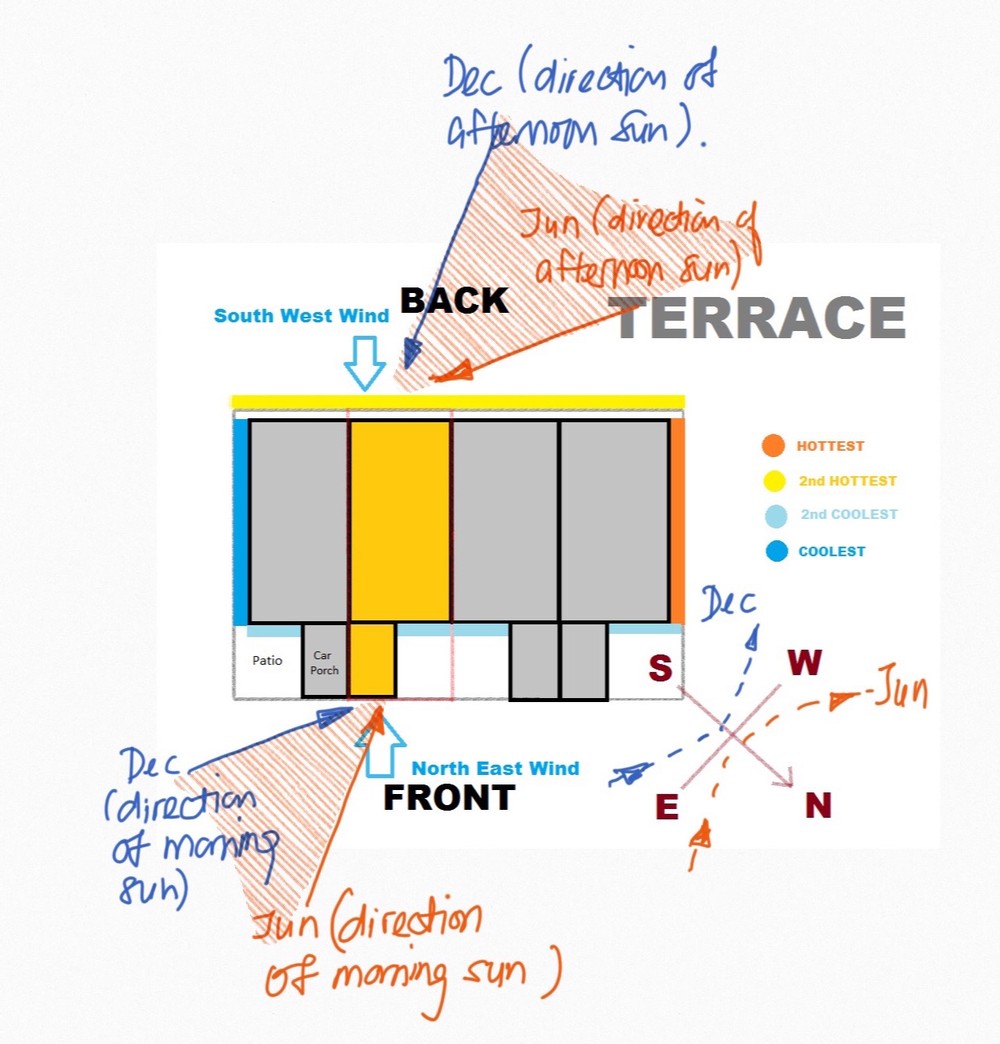
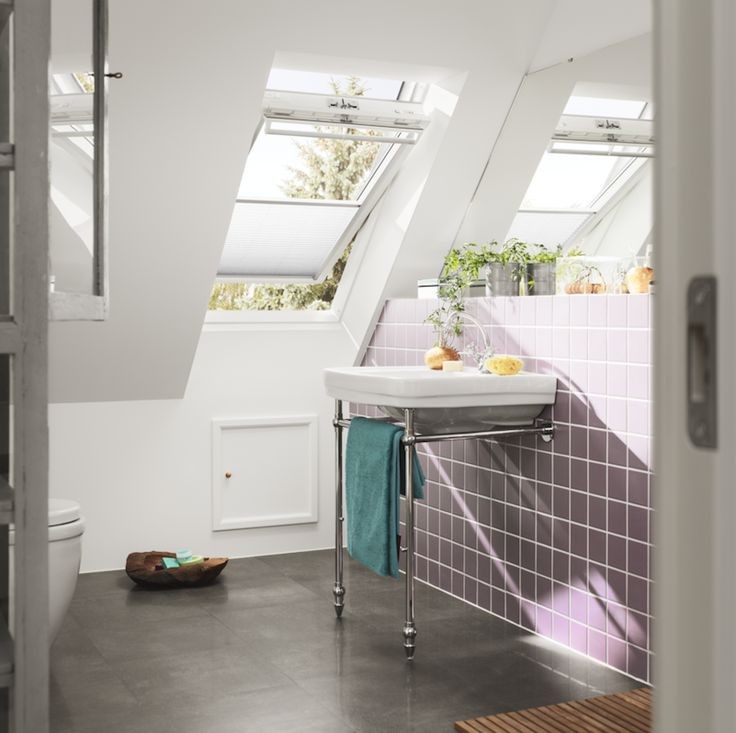
Actually, in Singapore’s humid climate, there are areas in the house which you would rather receive more sunshine than less, particularly during the wet months from October to February. These areas include the backyard, the bathroom, the kitchen, and even the walk-in wardrobe.
Having some afternoon sun during these wet months means your house will not be humid. The harmful mould doesn’t get to grow, your bathroom and wardrobe won’t smell and you have the best of the limited sunshine to dry your laundry!
To get the best of the afternoon sun at the back of your Terrace House during October to February period, means the back of your house should ideally faces South-West.

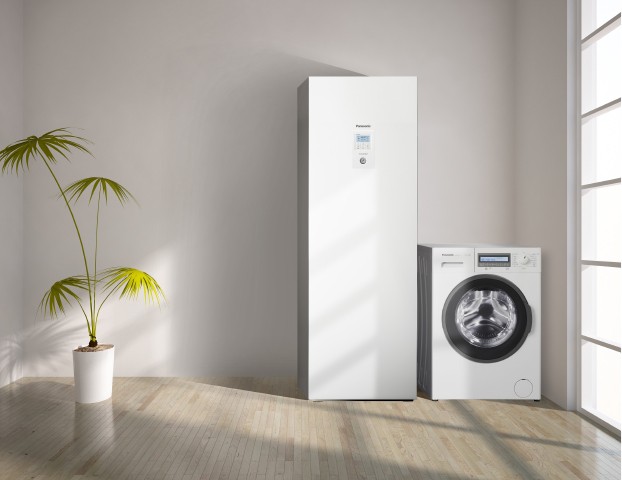
Semi-Detached House
Semi-Detached shares one common wall with its neighbour, while the other side is fully exposed to the sun and wind.
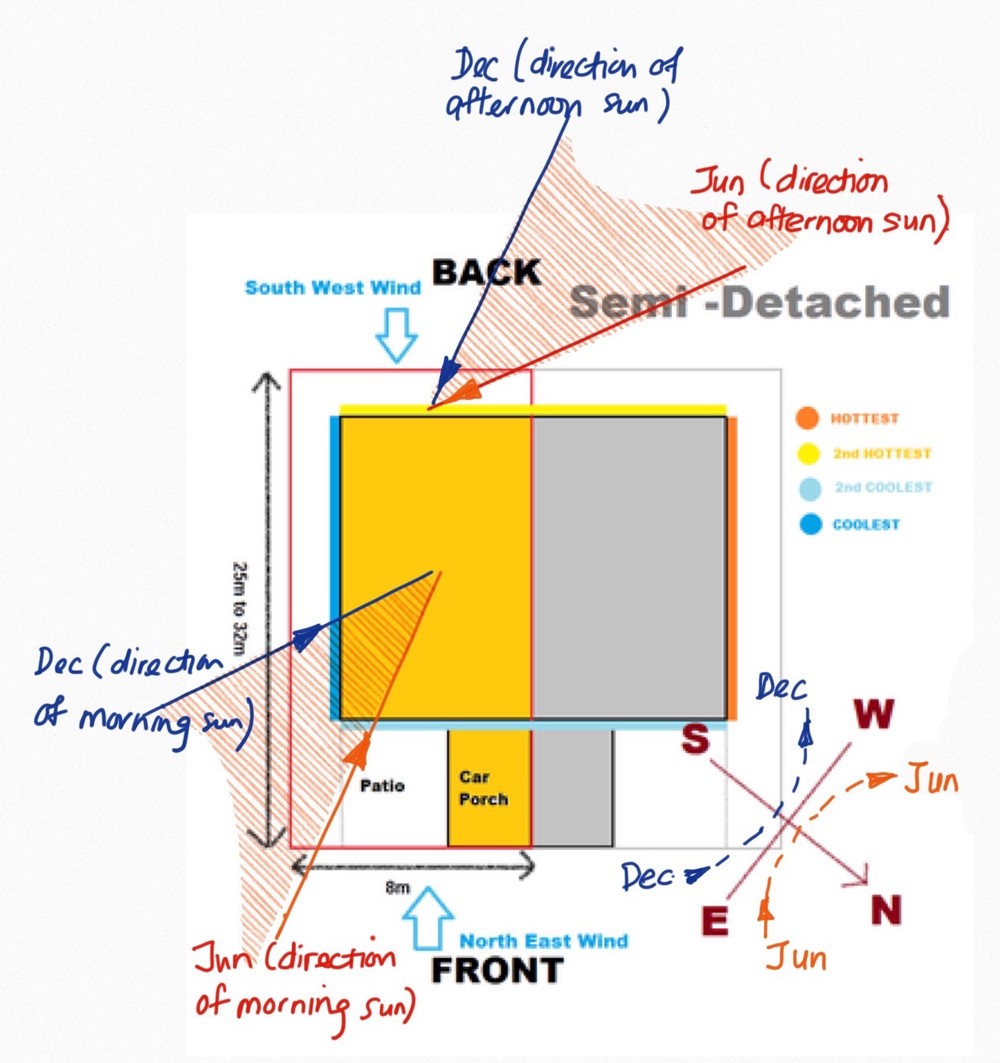
There are 2 implications:
Firstly, ventilation is better for Semi-D than inter-terraces because the side windows can be opened and due to natural ventilation.
Sun’s heat does not get trapped within the house.
But if the side of the Semi-D is directly facing the strongest direction of afternoon sun (Example, North-West facing) some Semi-D can attract more afternoon sun than Terraces. This is accentuated by the fact that the side of semi-D are usually 3-4 times longer than the front.
In the figure on the left, the front faces North-East, the back South-West and the sides faces South-East. This house will avoid afternoon sun at the front and the sides, while the back will only get the afternoon sun during the wet seasons between October and February.
WIND DIRECTION
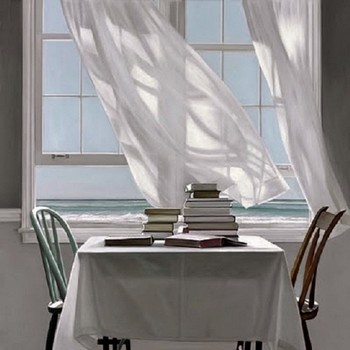
The direction of sun is NOT the only factor that determine whether the house is hot.
The other factors include
whether the house is Well-ventilated,
whether the Ceiling Height is High,
& the layout of the Corridors and the Rooms.
The direction of the wind is actually a key factor that influences whether a house is warm or will remain cooling in the day. Without exaggeration, choosing a well-ventilated house is of equal importance as choosing one that minimizes the afternoon sun direction.
In Singapore, the wind usually blows
from North or North East between December and early March &
from the South or South East between June and September
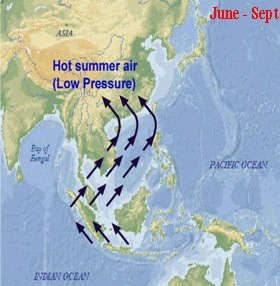
The following are obtained from the NEA website: [http://www.nea.gov.sg/training-knowledge/weather-climate/monsoon]
IDEAL WIND DIRECTION
It can be seen that the same NE-SW facing house shown in the figure above
is also the idealorientation that maximises wind flow and through ventilation
from wind perspective.
For example, during December to March when the South-West sides of the house gets the afternoon sun, it is also the period where wind blows from the North or North-East direction,
and as a result, the hot air
doesn’t really get trapped within the house.
This is particularly relevant for Terrace houses.
Hope you find this article useful. This is part of the Landed Knowledge series which we will be rolling out on a regular basis. Do share with your friends, whether by WhatsApp, Facebook or Email using the convenient link provided below. Hope it will benefit them as well.
